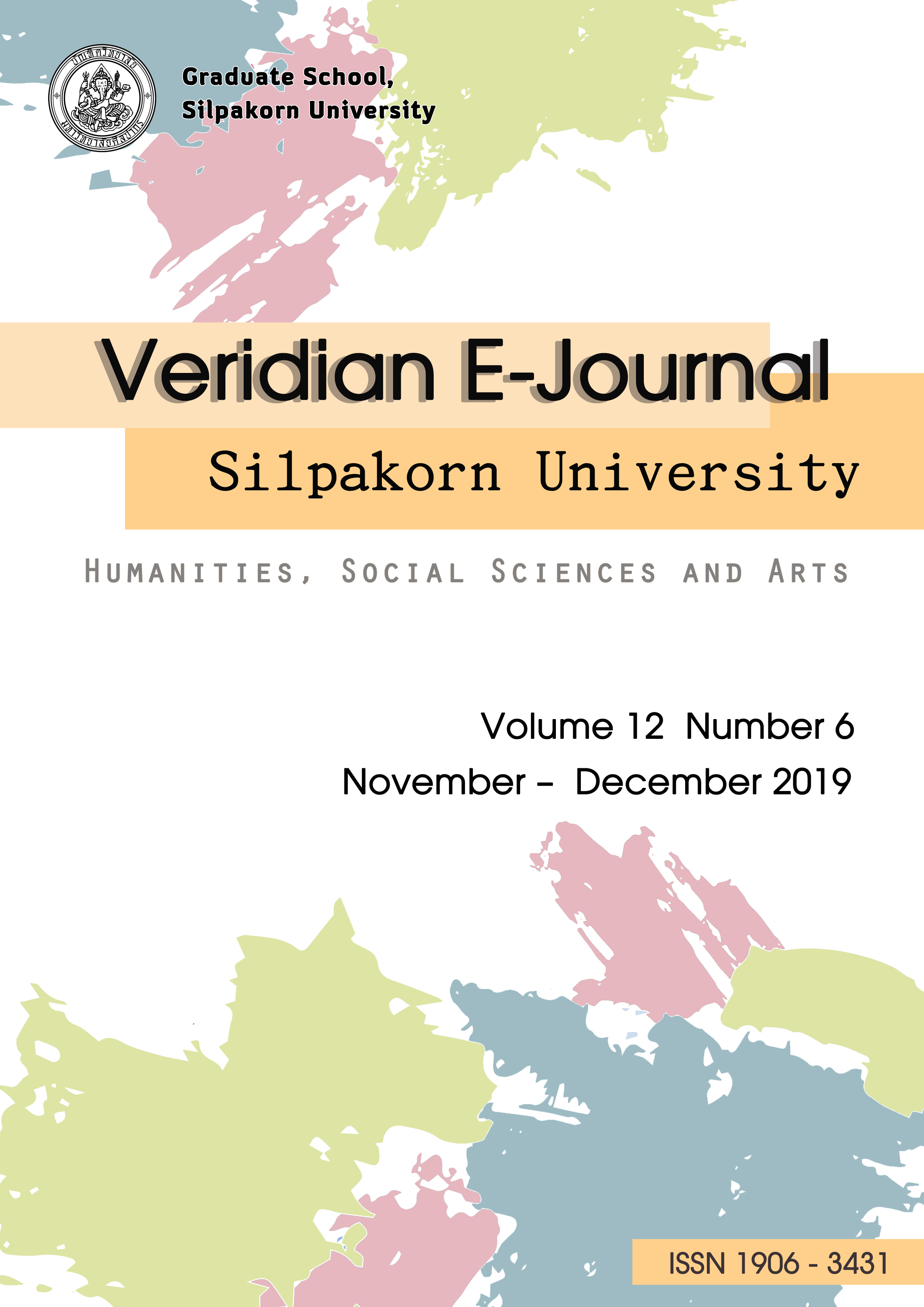การวิเคราะห์องค์ประกอบทักษะความเข้าใจและใช้เทคโนโลยีดิจิทัลของนักศึกษาบัณฑิตศึกษา (Factor Analysis of Graduate Students’ Understanding and Using Skills of Digital Literacy)
Main Article Content
บทคัดย่อ
การวิจัยนี้มีวัตถุประสงค์เพื่อวิเคราะห์องค์ประกอบทักษะความเข้าใจและใช้เทคโนโลยีดิจิทัล ของนักศึกษาบัณฑิตศึกษา กลุ่มตัวอย่างได้แก่ นักศึกษาระดับบัณฑิตศึกษา จากมหาวิทยาลัยของรัฐ และมหาวิทยาลัยในกำกับของรัฐ ปีการศึกษา 2561 ได้มาโดยการสุ่มแบบกลุ่ม (Cluster Sampling) จำนวน 630 คน เครื่องมือที่ใช้เป็นแบบสอบถามทักษะความเข้าใจและใช้เทคโนโลยีดิจิทัลของนักศึกษาบัณฑิตศึกษา วิเคราะห์ข้อมูลโดยใช้ สถิติบรรยาย (Descriptive Statistic) การวิเคราะห์องค์ประกอบเชิงสำรวจ (Exploratory Factor Analysis) และการวิเคราะห์องค์ประกอบเชิงยืนยัน (Confirmatory Factor Analysis) เพื่อตรวจสอบความสอดคล้องของโมเดลกับข้อมูลเชิงประจักษ์ โดยใช้โปรแกรมลิสเรล (LISREL)
ผลการวิจัยพบว่า
- ผลการวิเคราะห์องค์ประกอบเชิงสำรวจทักษะความเข้าใจและใช้เทคโนโลยีดิจิทัลของนักศึกษาบัณฑิตศึกษา พบว่า มีจำนวนองค์ประกอบที่ชัดเจนจำนวน 7 องค์ประกอบ รวมจำนวน 57ตัวแปร ประกอบด้วย องค์ประกอบที่ 1 “การรู้เท่าทันสื่อดิจิทัล” องค์ประกอบที่ 2 “การใช้เทคโนโลยีดิจิทัล” องค์ประกอบที่ 3 “การสร้างสรรค์สื่อดิจิทัล” องค์ประกอบที่ 4 “การเลือกใช้สื่อดิจิทัล” องค์ประกอบที่ 5 “การสร้างสรรค์สื่อเทคโนโลยี” องค์ประกอบที่ 6 “ความตระหนักรู้การใช้สื่อดิจิทัล” และ องค์ประกอบที่ 7 “การสร้างสรรค์สื่อเบื้องต้น”
- ผลการวิเคราะห์องค์ประกอบเชิงยืนยันของโมเดลการวัดองค์ประกอบทักษะความเข้าใจและใช้เทคโนโลยีดิจิทัล พบว่า โมเดลมีความสอดคล้องกลมกลืนกับข้อมูลเชิงประจักษ์พิจารณาได้จากค่าไค-สแควร์ ( =10.213, df=8, p=.250) ซึ่งแตกต่างจากศูนย์อย่างไม่มีนัยสำคัญ ค่าดัชนีวัดความกลมกลืน (GFI) มีค่าเท่ากับ .991 ค่าดัชนีวัดความกลมกลืนที่ปรับแก้แล้ว (AGFI) มีค่าเท่ากับ .968 และค่าดัชนีรากของค่าเฉลี่ยกำลังสอง ของส่วนเหลือ (RMR) มีค่าเท่ากับ .13 แสดงว่าโมเดลสอดคล้องกับข้อมูลเชิงประจักษ์
The purpose of this research was to analyze the components of graduate students’ understanding and using skills of digital literacy. The research sample consisted of 630 graduate students from public universities and autonomous universities, academic year 2018, acquired by the cluster sampling method. The research tool utilized in this study was a questionnaire on graduate students’ understanding and using skills of digital literacy. Data were analyzed by descriptive statistics, exploratory factor analysis, and confirmed component analysis to check the consistency of the model with empirical data by using LISREL program.
The research found that
- The results of the Exploration Factor Analysis of graduate students’ understanding and using skills of digital literacy found that there were 7 components and 57 variables, consisting of Component 1 “Digital Literacy”, Component 2 “Use of Digital Technology”, Component 3 “Creating Digital Media”, Component 4 “Choosing Digital Media”, Component 5 “Creating Technology Media”, Component 6 “Awareness of Digital Media Use”, and Component 7 “Basic Media Creation”.
- The results of Confirmatory Factor Analysis of the model to measure graduate students’ understanding and using skills of digital literacy found that the model was consistent with the empirical data. This can be determined from the chi-square value ( =10.213, df=8, p=.250) which was different from zero with no static significance. The Goodness of Fit Index (GFI) was .991 and the Adjust Goodness of Fit Index was .968. The Root Mean Square.

